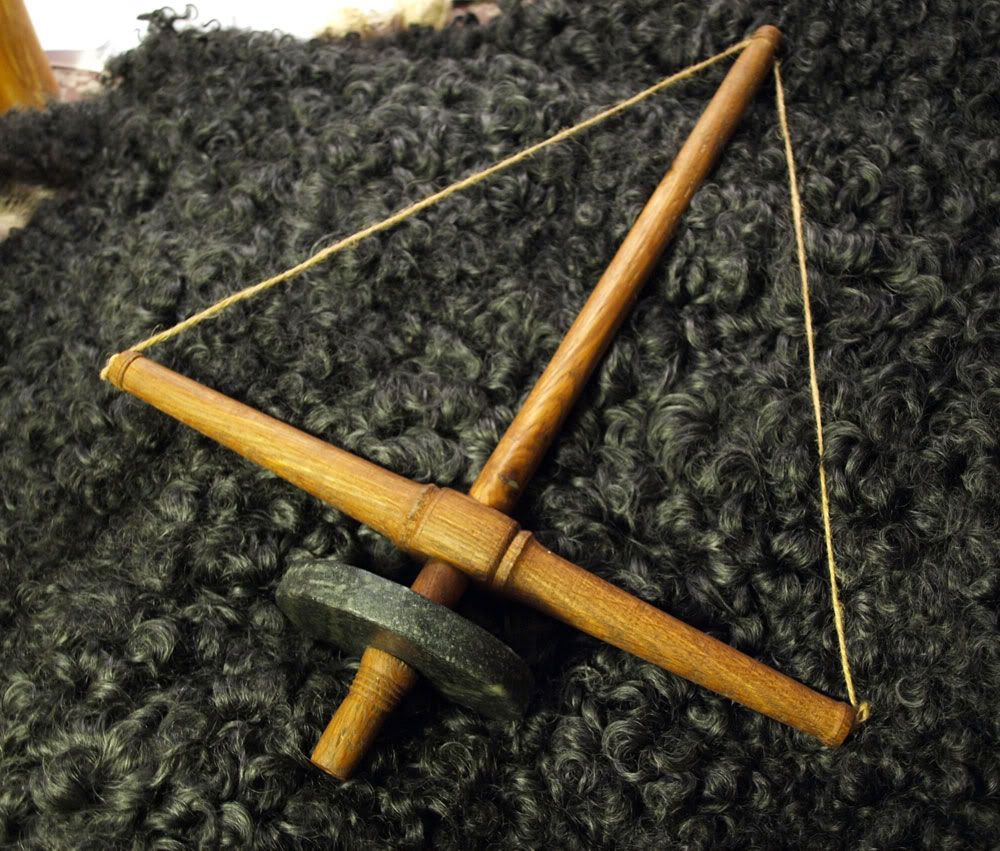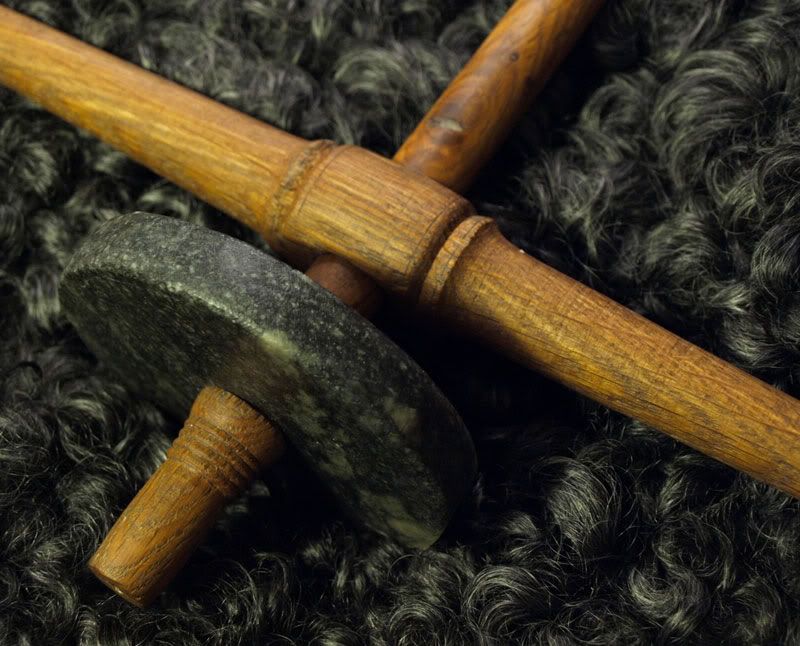So last week, when i got an oppotunity to try some woodturning I desided that my first ever woorturning-project, was to be a so-called "pump-drill".

Although I don't have any sources of these drills being used in medieval times, I can only think that they must have had them...
The mecanism that rotates the drill is very simple and has been used for at least a couple of hundred years, by all sorts of craftsmen (namely goldsmiths).
I haven't made the drill-bits, for the pump-drill yet. But photos of these will follow as soon as I figure out how to make them... Along with a demonstration!
The drill is made from oak-wood and norwegian soapstone.

The soapstone fly-wheel makes the drill rotate steadily and wind up the cords that spins the shaft of the drill.

The cord is mounted on both ends of the "cross-bar" (?) by a knot tied to a small nail.

At the top of the shaft the cord passes through a hole. This makes sure that the cord is equally long on both ends of the "cross-bar".

It looks really beautiful. Simple but beautiful. I´ve never tried woodturning in oak and I sort of thought it would be hard to get a nice smooth surface of the finished object, but you seem to have got it right.
ReplyDeleteGood luck with the drill-bits.
/Frej
Oak is a bitch ;-)
ReplyDeleteThe drill got a lot of small fractures. Nothing that compromises the stability, but it doesn't look that good.
Maybe it isn't that clear on the pictures... but unfortunately they are there...
Next time i will try Elderberry-wood instead!
I agree with Frej.. It's beautiful in its simplicity!
ReplyDeleteHave you looked at the tools in the Mästermyr chest?
ReplyDeletehttp://mis.historiska.se/mis/sok/resultat_foremal.asp?lokalid=39216&sort=ASC&orderby=lokal_&qtype=f&search=1
http://www.netlabs.net/~osan/Mastermyr/ImageLib.html
There are drills (Swe: borr) and drillbits in there.
Thanks for the links Lia! Those are som great pictures!
ReplyDeleteIf I could one day own copies of all those lovely tools... I would surely be one happy guy :-)
Even though there are drills in the Mästermyr-chest i don't think that they are suitable for a pump-drill. The type of drills ("Augers" or "spoon-drills") found in the Mästermyr-chest are augers and I believe the require a more sturdy handle. As they are rotated by hand.
The drill-bits for the pump-drill are smaller and the bit is almost always flat.
The tips of the drills can then be either diamond-shaped or "crown"-shaped.
As can be seen in this reconstruction:
http://www.historiavivens1300.at/hv1300.htm
And here...
http://www.historiavivens1300.at/hv1300.htm
Nice work!
ReplyDeleteYou wrote: "Although I don't have any sources of these drills being used in medieval times, (...)".
Well, here they are:
1425 http://www.nuernberger-hausbuecher.de/75-Amb-2-317-5-v "Hausbuch der Mendelschen Zwölfbrüderstiftung"
ca. 1280 http://www.beinschnitzer.de/biblio/spielebuch.jpg , ist from "Libro del Acedrex"
its very simple but awesome
ReplyDeleteThese pump drills were used in the middle ages. In the book "On The Divers Arts, written by Theophils, there is a plate done in 1576 by the artist Stephanus. In the upper left hand corner you will see two of these drills.
ReplyDeleteReally useful post. I'm probably going to be making my own pump drill for medieval jewellery work.
ReplyDeleteI've used one of your photo's and linked to this blog. I hope that is OK with you.
Jamie
Primitive Method blog
Very nice work! I have been searching for material on renaissance drills lately and this is a goldmine. Have you seen information on heavier drills for things like pipe augers?
ReplyDeleteFor wood i would think that spoon augers were the most common.
ReplyDeleteDrilling in stone might be done with a chisel.
I will have to read about pipe-augers. Don't know anything about them.